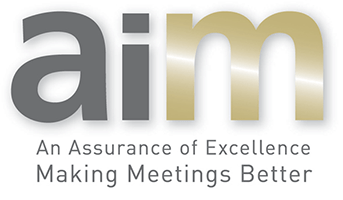It seems that for the past 2 years or so - as the conference and events industry tried to navigate the pandemic - we've all become a little bit obsessed with the future of face-to-face meetings and what a "new normal" might look like with the advent of virtual and hybrid meeting technologies.
Which is best, face-to-face or virtual? Well, the answer all along was... BOTH!
To put it another way: A X B is always greater than 2A or 2B.
As we emerge from those dark days and the boring brown line of equilibrium restores itself to the "real" normal, businesses are increasingly recognizing the benefits of utilizing both face-to-face meetings and virtual meetings. Face-to-face meetings provide the opportunity for in-depth discussions, personal interaction, and relationship building, while virtual meetings offer greater flexibility, improved accessibility, cost savings, real-time collaboration, and better time management.
One of the main benefits of virtual meetings is their flexibility. They can be scheduled quickly and easily, allowing participants to join from anywhere in the world. This means that virtual meetings can be used to bring together remote employees, stakeholders, and clients who may not have been able to attend face-to-face meetings due to logistical or financial constraints. In addition, virtual meetings can be scheduled at times that are convenient for all participants, regardless of time zone differences.
Another significant benefit of virtual meetings is the cost savings. Face-to-face meetings can be expensive, requiring travel, accommodation, and venue costs. In contrast, virtual meetings require minimal expenses, making them a cost-effective alternative. This is especially important for small businesses or startups that may not have the budget for frequent face-to-face meetings.
Virtual meetings also offer the opportunity for real-time collaboration and the sharing of documents and information. Participants can work together on a project or discuss important issues, and can even access and share important files or presentations during the meeting. Additionally, virtual meetings can be recorded for later reference, ensuring that everyone is on the same page and allowing for further discussion or analysis.
While virtual meetings are efficient and convenient, face-to-face meetings still offer important benefits. For example, they provide opportunities for personal interaction and relationship building that cannot be replicated in a virtual setting. In addition, face-to-face meetings can allow for more in-depth discussions and problem-solving, as well as creative brainstorming sessions.
Finally, both virtual meetings and face-to-face meetings offer opportunities for skills development. Virtual meetings can provide opportunities for improving virtual communication and presentation skills, while face-to-face meetings can help with building confidence and public speaking skills.
Businesses that use both face-to-face meetings and virtual meetings can achieve a balance between the benefits of personal interaction and the efficiency and flexibility of virtual communication. By utilizing the advantages of both types of meetings, businesses can enhance collaboration, productivity, and overall success.
What kind of technology is required for virtual meetings?
Virtual meetings can be conducted using various technologies such as video conferencing software, teleconferencing, and web conferencing tools. The specific technology used will depend on the needs of the business and the type of meeting being conducted.
How do virtual meetings affect team dynamics?
Virtual meetings can change team dynamics by reducing the frequency of face-to-face interactions and the opportunities for spontaneous conversations. However, virtual meetings can also improve collaboration and communication by allowing team members to connect more easily and frequently, regardless of location.
Can virtual meetings replace face-to-face meetings?
Virtual meetings can never fully replace face-to-face meetings, as there are certain benefits to personal interaction that cannot be replicated virtually. However, virtual meetings can complement face-to-face meetings and offer greater flexibility, efficiency, and accessibility.
What are some tips for conducting effective virtual meetings?
Effective virtual meetings require careful planning, clear communication, and the use of appropriate technology. Some tips for conducting effective virtual meetings include setting clear objectives, providing relevant materials in advance, ensuring all participants have access to the necessary technology, and actively engaging participants throughout the meeting.
How can businesses balance the use of face-to-face and virtual meetings?
To balance the use of face-to-face and virtual meetings, businesses should consider the purpose of the meeting, the needs and preferences of participants, and the available technology. Face-to-face meetings may be more appropriate for in-depth discussions or relationship-building, while virtual meetings may be more efficient for routine updates or remote collaboration.






